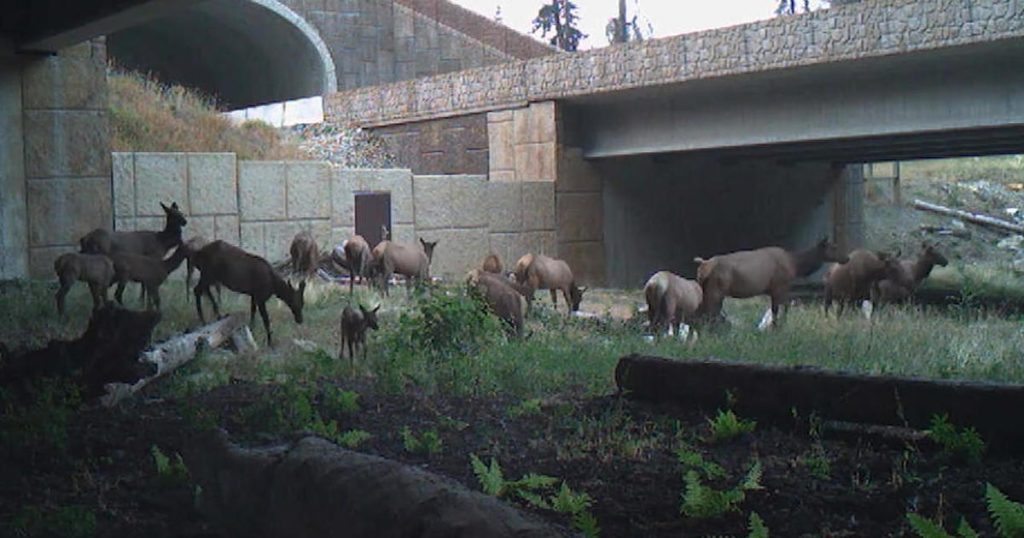Interstate 90 is the longest highway in the United States, spanning over 3,000 miles from Seattle to Boston. However, it serves as a divide for animals living to the north and south, disrupting their natural habitats. To address this issue, the U.S. Forest Service and the Washington State Department of Transportation have developed a network of “critter crossings” in Washington, including overpasses and underpasses to provide safe passage for wildlife. These structures span 15 miles near Snoqualmie Pass, helping animals maintain genetic variability and prevent localized extinction.
Most animals avoid busy highways like Interstate 90, but brave ones may attempt to cross and risk getting run over. Wildlife crossings are designed to make this process safer, but animals must be directed to these crossings. Fencing along the road funnels animals towards crossing points, and high concrete walls block headlights and traffic noise to mimic their natural habitat on either side of the road. In Washington, cameras have captured animals, like mule deer and coyotes, using these crossings over 5,000 times, with the Banff National Park in Canada being a successful model.
Wildlife crossings have been implemented in 43 states, with various structures in different regions like pronghorn crossings in Wyoming and panthers and alligators in Florida. In California, the Wallis Annenberg Wildlife Crossing is under construction, scheduled to be the largest wildlife corridor in the country spanning 10 lanes of the 101 Freeway. This project aims to mitigate the impact of highways on wildlife, preserve genetic diversity, and prevent extinctions of threatened species like mountain lions in the region.
Under Interstate 90, researchers at Central Washington University are studying the use of underpasses by various species of wildlife, including toads and salamanders. Collisions involving large wildlife are a significant issue, resulting in human deaths and road closures. To address this problem, the federal government has allocated $350 million in grants for states to build crossings and improve safety. Wildlife crossings have proven to reduce collisions, save lives, and increase commute efficiency, with public support transcending political affiliations due to the shared goal of preserving wildlife.
Despite occasional construction delays, the public remains focused on the long-term benefits of wildlife crossings, which are supported by people of all political backgrounds. These structures not only prevent animal deaths on roads but also protect human lives, reduce accidents, and accelerate commute times. Wildlife crossings have become a symbol of bipartisan agreement, as they address a common concern for preserving wildlife and reducing accidents on highways. Through these initiatives, humans and wildlife can coexist more harmoniously, ensuring the conservation of genetic diversity and the prevention of localized extinctions.


